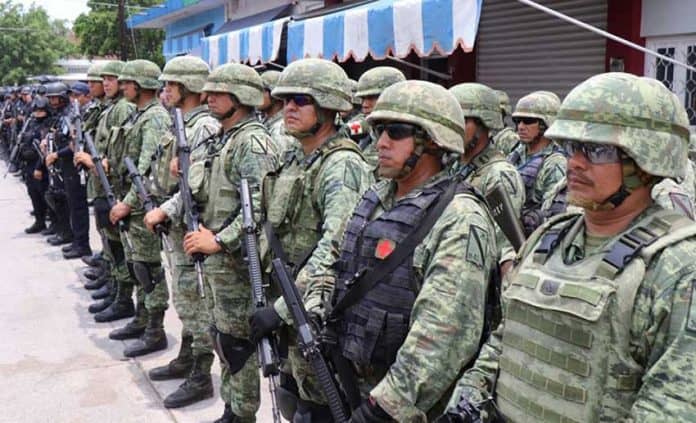An attack at a funeral parlor that left eight mourners dead is just one of many acts of violence in Michoacán that have put 2018 on track to join 2016 and 2017 as the state’s most violent years of the past decade.
There were 598 intentional homicides in the state in the six-month period from January to June, according to the National Public Security System (SNSP), continuing a high murder rate that has prevailed during the administration of current Michoacán Governor Silvano Aureoles, who took office on October 1, 2015.
Of the 3,369 intentional homicides in the state since he was sworn in 1,277 were in 2016 and 1,260 last year.
This year’s rate equates to an average of 99.6 murders per month or 3.6 per day, with almost four out of every five homicides committed with a firearm.
In contrast, there were 326 intentional homicides in the first six months of 2015, or 45.5% less than the figure recorded in the same period this year.
According to security authorities, the two most powerful criminal organizations that operate in the state — the Jalisco New Generation Cartel (CJNG) and Los Viagra — are engaged in a bitter turf war that is responsible for much of the violence in several Michoacán municipalities.
State authorities have identified Los Viagra leader Nicolás Sierra Santana, also known as El Gordo and El Coruco, and at least three of his brothers — all leaders in the new Familia Michoacana cartel — as priority targets.
On the CJNG side, a leader known as El Rambo along with several plaza chiefs, all of whom are believed to be close to cartel leader Nemesio “El Mencho” Oseguera Cervantes, are considered key targets.
State security sources told the newspaper El Universal that both the CJNG and Los Viagra have strongholds in the Tierra Caliente, Sierra Costa and Sierra Occidental regions of Michoacán, where their turf war has also been concentrated.
Marijuana and opium poppies are both grown in parts of the state and synthetic drugs are produced in clandestine laboratories.
Cocaine controlled by the Sinaloa Cartel also transits through the state, a source told El Universal.
Federal intelligence sources also confirmed that in some areas cartels use municipal police as an armed wing of their criminal organization, adding that operations to break up the complicity are already under way.
But despite authorities’ efforts, violence continues to plague Michoacán — one of five Mexican states subject to a “level 4: do not travel” advisory from the United States Department of State.
While many of the deaths reported are the result of gun battles between opposing criminal organizations, the high levels of violence make it inevitable that innocent people also become victims.
One of the eight victims at the Uruapan funeral parlor last week was a 17-year-old adolescent identified only as Eduardo who attended the vigil because he worked for the father of the man being mourned who had been killed earlier the same day.
“Eduardo was a good boy, he was never a bad person, very hardworking,” the young man’s uncle told El Universal at a vigil for his nephew.
“What’s happening at the moment in the state scares us. There’s so much killing, so many massacres of women, children and innocent people that we don’t know what’s happening anymore and what will happen later,” he added.
Fear coupled with anger at authorities’ failure to combat the presence of organized crime have triggered the reformation of at least three self-defense groups that have pledged not to put their weapons down until peace has returned to their towns.
One of the reformed groups is made up of around 200 residents of the Sierra Costa municipalities of Aquila, Coalcomán and Chinicuila who came together on July 20 with weapons at the ready to declare that they are back in business.
The vigilantes, all ex-members of a self-defense force that formed in 2013, started their public security duties the same day but some local residents rejected the reborn force, running them out of the town of Ostula with assaults rifles of their own while shouting “we don’t want you here!”
Michoacán was the first state in Mexico to see self-defense groups rise up to fight organized crime.
In 2013, an armed struggle began against the Caballeros Templarios cartel that went on for 10 months and extended to 32 communities.
However, the so-called autodefensas agreed to become officially registered community police forces in May 2014 and were consequently supplied with uniforms and weapons by the state.
Source: El Universal (sp)
